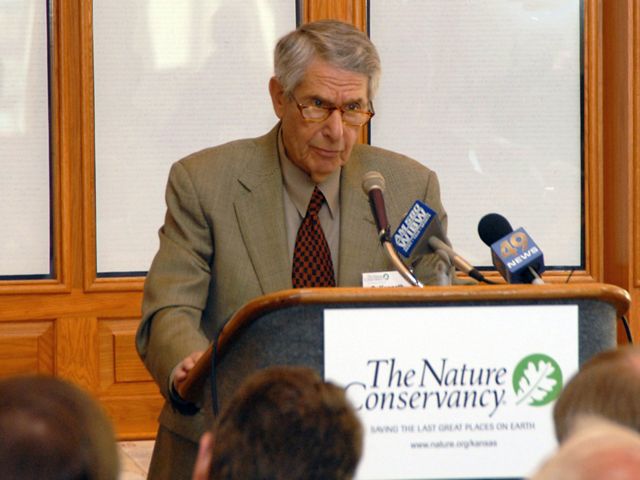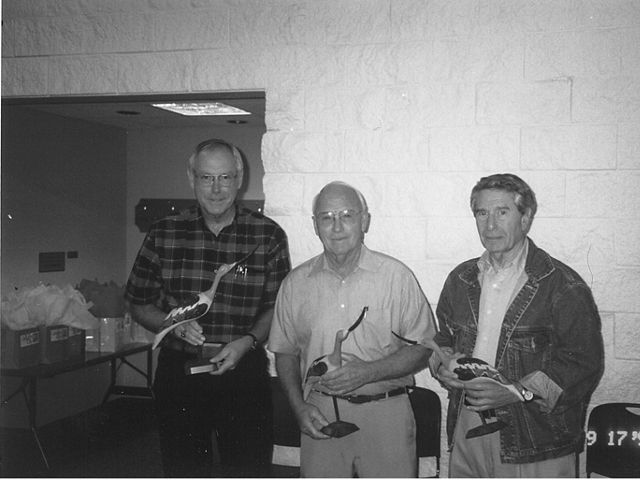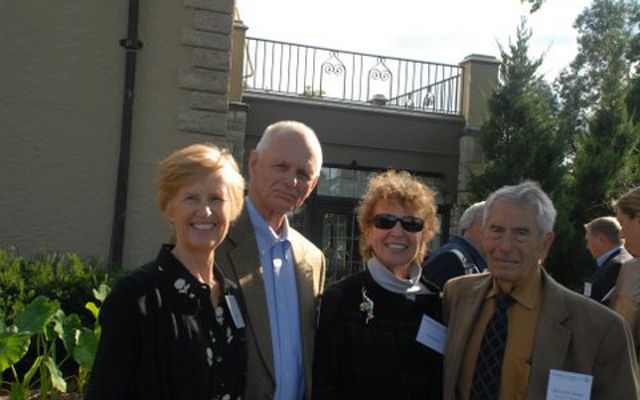[{"title":"Q&A with Tony Capizzo: Flint Hills Initiative Director ","description":"The Flint Hills of Oklahoma and Kansas nurture some of the greatest biological diversity in the world. TNC’s Tony Capizzo is leading the charge to protect and preserve this incredible ecoregion.","link":"https://www.nature.org/en-us/about-us/where-we-work/united-states/kansas/stories-in-kansas/tony-capizzo-flint-hills-initiative-director/","target":"_self","desktopImageCrop":"left-top","mobileImageCrop":"left-top","pageImageAlt":"A man on horseback crosses a wide landscape of the Flint Hills of Kansas at dusk.","articleDate":"Mar 26, 2025","contentTypeTag":"Interview","geoLocationTag":["Kansas","United States"],"topicTag":["grasslands","land conservation","conservation work"],"placesWeProtectTag":[],"businesstags":["Kansas","United States"],"businesstags_ids":["tnc:business-group/united-states/kansas","tnc:business-group/united-states"],"pageImage":{"small":"https://natureconservancy-h.assetsadobe.com/is/image/content/dam/tnc/nature/en/photos/k/a/kansas-KS-Mark-Clarke-photo-contest-2022-.jpg?crop=0%2C0%2C2229%2C1672&wid=300&hei=225&scl=7.431111111111111","default":"https://natureconservancy-h.assetsadobe.com/is/image/content/dam/tnc/nature/en/photos/k/a/kansas-KS-Mark-Clarke-photo-contest-2022-.jpg?crop=0%2C0%2C2229%2C1672&wid=300&hei=225&scl=7.431111111111111","medium2x":"https://natureconservancy-h.assetsadobe.com/is/image/content/dam/tnc/nature/en/photos/k/a/kansas-KS-Mark-Clarke-photo-contest-2022-.jpg?crop=0%2C0%2C2229%2C1672&wid=800&hei=600&scl=2.7866666666666666","large":"https://natureconservancy-h.assetsadobe.com/is/image/content/dam/tnc/nature/en/photos/k/a/kansas-KS-Mark-Clarke-photo-contest-2022-.jpg?crop=0%2C0%2C2229%2C1672&wid=800&hei=600&scl=2.7866666666666666","small2x":"https://natureconservancy-h.assetsadobe.com/is/image/content/dam/tnc/nature/en/photos/k/a/kansas-KS-Mark-Clarke-photo-contest-2022-.jpg?crop=0%2C0%2C2229%2C1672&wid=600&hei=450&scl=3.7155555555555555","medium":"https://natureconservancy-h.assetsadobe.com/is/image/content/dam/tnc/nature/en/photos/k/a/kansas-KS-Mark-Clarke-photo-contest-2022-.jpg?crop=0%2C0%2C2229%2C1672&wid=800&hei=600&scl=2.7866666666666666","large2x":"https://natureconservancy-h.assetsadobe.com/is/image/content/dam/tnc/nature/en/photos/k/a/kansas-KS-Mark-Clarke-photo-contest-2022-.jpg?crop=0%2C0%2C2229%2C1672&wid=1600&hei=1200&scl=1.3933333333333333"}},{"title":"Kansas Habitat Management Tax Credit","description":"Together with our partners, TNC is excited to announce the introduction of HB 2097, which reauthorizes and updates Kansas’s habitat management tax credit.","link":"https://www.nature.org/en-us/about-us/where-we-work/united-states/kansas/stories-in-kansas/hb-2097-habitat-management-tax-credit/","target":"_self","desktopImageCrop":"center-middle","mobileImageCrop":"center-middle","pageImageAlt":"A wetland area flanked by grasses beneath a cloudy sky.","articleDate":"Feb 10, 2025","contentTypeTag":"Policies and Procedures","geoLocationTag":["Kansas","United States"],"topicTag":["policy","conservation work"],"placesWeProtectTag":[],"businesstags":["Kansas","United States"],"businesstags_ids":["tnc:business-group/united-states/kansas","tnc:business-group/united-states"],"pageImage":{"small":"https://natureconservancy-h.assetsadobe.com/is/image/content/dam/tnc/nature/en/photos/cheyenne-bottoms-wetland-kansas-ricardo-reitmeyer-getty.jpg?crop=333%2C0%2C3333%2C2500&wid=300&hei=225&scl=11.11111111111111","default":"https://natureconservancy-h.assetsadobe.com/is/image/content/dam/tnc/nature/en/photos/cheyenne-bottoms-wetland-kansas-ricardo-reitmeyer-getty.jpg?crop=333%2C0%2C3333%2C2500&wid=300&hei=225&scl=11.11111111111111","medium2x":"https://natureconservancy-h.assetsadobe.com/is/image/content/dam/tnc/nature/en/photos/cheyenne-bottoms-wetland-kansas-ricardo-reitmeyer-getty.jpg?crop=333%2C0%2C3333%2C2500&wid=800&hei=600&scl=4.166666666666667","large":"https://natureconservancy-h.assetsadobe.com/is/image/content/dam/tnc/nature/en/photos/cheyenne-bottoms-wetland-kansas-ricardo-reitmeyer-getty.jpg?crop=333%2C0%2C3333%2C2500&wid=800&hei=600&scl=4.166666666666667","small2x":"https://natureconservancy-h.assetsadobe.com/is/image/content/dam/tnc/nature/en/photos/cheyenne-bottoms-wetland-kansas-ricardo-reitmeyer-getty.jpg?crop=333%2C0%2C3333%2C2500&wid=600&hei=450&scl=5.555555555555555","medium":"https://natureconservancy-h.assetsadobe.com/is/image/content/dam/tnc/nature/en/photos/cheyenne-bottoms-wetland-kansas-ricardo-reitmeyer-getty.jpg?crop=333%2C0%2C3333%2C2500&wid=800&hei=600&scl=4.166666666666667","large2x":"https://natureconservancy-h.assetsadobe.com/is/image/content/dam/tnc/nature/en/photos/cheyenne-bottoms-wetland-kansas-ricardo-reitmeyer-getty.jpg?crop=333%2C0%2C3333%2C2500&wid=1600&hei=1200&scl=2.0833333333333335"}},{"title":"Policy Priorities in Kansas","description":"The Nature Conservancy works with state and federal legislators, government agencies and local partners to find meaningful policy solutions that ensure Kansas's lands and waters remain healthy.","link":"https://www.nature.org/en-us/about-us/where-we-work/united-states/kansas/stories-in-kansas/conservation-water-advocacy-legislative-policy-priorities/","target":"_self","hideArticleDate":"true","desktopImageCrop":"center-middle","mobileImageCrop":"center-middle","pageImageAlt":" A large stone building with columns in front and a bronze dome at the top.","readTimeMinutes":"4","articleDate":"Jun 20, 2023","contentTypeTag":"Program Overview","geoLocationTag":["Kansas","United States"],"topicTag":["climate policy","climate change","conservation work","water conservation","government partners","partners","policy","renewable energy","energy","agriculture","grasslands","land conservation"],"placesWeProtectTag":[],"businesstags":["Kansas","United States"],"businesstags_ids":["tnc:business-group/united-states/kansas","tnc:business-group/united-states"],"pageImage":{"small":"https://natureconservancy-h.assetsadobe.com/is/image/content/dam/tnc/nature/en/photos/k/a/kansas-state-capitol.jpg?crop=221%2C0%2C3557%2C2668&wid=300&hei=225&scl=11.857777777777779","default":"https://natureconservancy-h.assetsadobe.com/is/image/content/dam/tnc/nature/en/photos/k/a/kansas-state-capitol.jpg?crop=221%2C0%2C3557%2C2668&wid=300&hei=225&scl=11.857777777777779","medium2x":"https://natureconservancy-h.assetsadobe.com/is/image/content/dam/tnc/nature/en/photos/k/a/kansas-state-capitol.jpg?crop=221%2C0%2C3557%2C2668&wid=800&hei=600&scl=4.446666666666666","large":"https://natureconservancy-h.assetsadobe.com/is/image/content/dam/tnc/nature/en/photos/k/a/kansas-state-capitol.jpg?crop=221%2C0%2C3557%2C2668&wid=800&hei=600&scl=4.446666666666666","small2x":"https://natureconservancy-h.assetsadobe.com/is/image/content/dam/tnc/nature/en/photos/k/a/kansas-state-capitol.jpg?crop=221%2C0%2C3557%2C2668&wid=600&hei=450&scl=5.928888888888889","medium":"https://natureconservancy-h.assetsadobe.com/is/image/content/dam/tnc/nature/en/photos/k/a/kansas-state-capitol.jpg?crop=221%2C0%2C3557%2C2668&wid=800&hei=600&scl=4.446666666666666","large2x":"https://natureconservancy-h.assetsadobe.com/is/image/content/dam/tnc/nature/en/photos/k/a/kansas-state-capitol.jpg?crop=221%2C0%2C3557%2C2668&wid=1600&hei=1200&scl=2.223333333333333"}},{"title":"Wind Cave Bison At Smoky Valley Ranch","description":"42 bison with unique genetics are now at home in Kansas.","link":"https://www.nature.org/en-us/about-us/where-we-work/united-states/kansas/stories-in-kansas/wind-cave-bison-at-smoky-valley-ranch/","target":"_self","hideArticleDate":"true","desktopImageCrop":"left-top","mobileImageCrop":"left-top","pageImageAlt":"A small herd of bison are guided along a dirt road by TNC staff driving white pickup trucks.","articleDate":"Sep 12, 2022","contentTypeTag":"Success","geoLocationTag":["Kansas","United States"],"topicTag":["bison","mammals","animals","Species"],"placesWeProtectTag":["Smoky Valley Ranch Preserve","Nature Preserves"],"businesstags":["Kansas","United States"],"businesstags_ids":["tnc:business-group/united-states/kansas","tnc:business-group/united-states"],"pageImage":{"small":"https://natureconservancy-h.assetsadobe.com/is/image/content/dam/tnc/nature/en/photos/d/s/DSC_6502_4000x2200.jpg?crop=0%2C0%2C2933%2C2200&wid=300&hei=225&scl=9.777777777777779","default":"https://natureconservancy-h.assetsadobe.com/is/image/content/dam/tnc/nature/en/photos/d/s/DSC_6502_4000x2200.jpg?crop=0%2C0%2C2933%2C2200&wid=300&hei=225&scl=9.777777777777779","medium2x":"https://natureconservancy-h.assetsadobe.com/is/image/content/dam/tnc/nature/en/photos/d/s/DSC_6502_4000x2200.jpg?crop=0%2C0%2C2933%2C2200&wid=800&hei=600&scl=3.6666666666666665","large":"https://natureconservancy-h.assetsadobe.com/is/image/content/dam/tnc/nature/en/photos/d/s/DSC_6502_4000x2200.jpg?crop=0%2C0%2C2933%2C2200&wid=800&hei=600&scl=3.6666666666666665","small2x":"https://natureconservancy-h.assetsadobe.com/is/image/content/dam/tnc/nature/en/photos/d/s/DSC_6502_4000x2200.jpg?crop=0%2C0%2C2933%2C2200&wid=600&hei=450&scl=4.888888888888889","medium":"https://natureconservancy-h.assetsadobe.com/is/image/content/dam/tnc/nature/en/photos/d/s/DSC_6502_4000x2200.jpg?crop=0%2C0%2C2933%2C2200&wid=800&hei=600&scl=3.6666666666666665","large2x":"https://natureconservancy-h.assetsadobe.com/is/image/content/dam/tnc/nature/en/photos/d/s/DSC_6502_4000x2200.jpg?crop=0%2C0%2C2933%2C2200&wid=1600&hei=1200&scl=1.8333333333333333"}},{"title":"Confessions of Climate Change Ignorer","description":"Kansas Nature Conservancy director Rob Manes reflects on not taking climate change seriously 30 years ago and how that's changed.","link":"https://www.nature.org/en-us/about-us/where-we-work/united-states/kansas/stories-in-kansas/reflections-climate-change/","target":"_self","desktopImageCrop":"center-middle","mobileImageCrop":"center-middle","pageImageAlt":"A father has his arm around his grown daughter's shoulders with hilly prairie in the background.","articleDate":"Dec 16, 2021","articleAuthor":["Rob Manes"],"contentTypeTag":"Blog","geoLocationTag":["Kansas","United States"],"topicTag":["climate change","conservation work"],"placesWeProtectTag":[],"businesstags":["Kansas","United States"],"businesstags_ids":["tnc:business-group/united-states/kansas","tnc:business-group/united-states"],"pageImage":{"small":"https://natureconservancy-h.assetsadobe.com/is/image/content/dam/tnc/nature/en/photos/rob-aubrey-manes-kansas.jpg?crop=520%2C0%2C3120%2C2340&wid=300&hei=225&scl=10.4","default":"https://natureconservancy-h.assetsadobe.com/is/image/content/dam/tnc/nature/en/photos/rob-aubrey-manes-kansas.jpg?crop=520%2C0%2C3120%2C2340&wid=300&hei=225&scl=10.4","medium2x":"https://natureconservancy-h.assetsadobe.com/is/image/content/dam/tnc/nature/en/photos/rob-aubrey-manes-kansas.jpg?crop=520%2C0%2C3120%2C2340&wid=800&hei=600&scl=3.9","large":"https://natureconservancy-h.assetsadobe.com/is/image/content/dam/tnc/nature/en/photos/rob-aubrey-manes-kansas.jpg?crop=520%2C0%2C3120%2C2340&wid=800&hei=600&scl=3.9","small2x":"https://natureconservancy-h.assetsadobe.com/is/image/content/dam/tnc/nature/en/photos/rob-aubrey-manes-kansas.jpg?crop=520%2C0%2C3120%2C2340&wid=600&hei=450&scl=5.2","medium":"https://natureconservancy-h.assetsadobe.com/is/image/content/dam/tnc/nature/en/photos/rob-aubrey-manes-kansas.jpg?crop=520%2C0%2C3120%2C2340&wid=800&hei=600&scl=3.9","large2x":"https://natureconservancy-h.assetsadobe.com/is/image/content/dam/tnc/nature/en/photos/rob-aubrey-manes-kansas.jpg?crop=520%2C0%2C3120%2C2340&wid=1600&hei=1200&scl=1.95"}},{"title":"The Birds and the Bees, and the Bats and the Ants","description":"A Q&A with Shelly Wiggam about pollinators in Kansas.","link":"https://www.nature.org/en-us/about-us/where-we-work/united-states/kansas/stories-in-kansas/protecting-local-pollinators/","target":"_self","desktopImageCrop":"center-middle","mobileImageCrop":"center-middle","pageImageAlt":"Orange and black butterfly with white spots on a purple flowering stalk.","articleDate":"Mar 25, 2021","contentTypeTag":"Interview","geoLocationTag":["Kansas","United States"],"topicTag":["butterflies","insects","Arthropoda","animals","Species","ranching","agriculture","conservation work","birds","bees"],"placesWeProtectTag":[],"businesstags":["Kansas","United States"],"businesstags_ids":["tnc:business-group/united-states/kansas","tnc:business-group/united-states"],"pageImage":{"small":"https://natureconservancy-h.assetsadobe.com/is/image/content/dam/tnc/nature/en/photos/r/e/regal-fritillary-hoary-vervain.jpg?crop=245%2C0%2C3797%2C2848&wid=300&hei=225&scl=12.657777777777778","default":"https://natureconservancy-h.assetsadobe.com/is/image/content/dam/tnc/nature/en/photos/r/e/regal-fritillary-hoary-vervain.jpg?crop=245%2C0%2C3797%2C2848&wid=300&hei=225&scl=12.657777777777778","medium2x":"https://natureconservancy-h.assetsadobe.com/is/image/content/dam/tnc/nature/en/photos/r/e/regal-fritillary-hoary-vervain.jpg?crop=245%2C0%2C3797%2C2848&wid=800&hei=600&scl=4.746666666666667","large":"https://natureconservancy-h.assetsadobe.com/is/image/content/dam/tnc/nature/en/photos/r/e/regal-fritillary-hoary-vervain.jpg?crop=245%2C0%2C3797%2C2848&wid=800&hei=600&scl=4.746666666666667","small2x":"https://natureconservancy-h.assetsadobe.com/is/image/content/dam/tnc/nature/en/photos/r/e/regal-fritillary-hoary-vervain.jpg?crop=245%2C0%2C3797%2C2848&wid=600&hei=450&scl=6.328888888888889","medium":"https://natureconservancy-h.assetsadobe.com/is/image/content/dam/tnc/nature/en/photos/r/e/regal-fritillary-hoary-vervain.jpg?crop=245%2C0%2C3797%2C2848&wid=800&hei=600&scl=4.746666666666667","large2x":"https://natureconservancy-h.assetsadobe.com/is/image/content/dam/tnc/nature/en/photos/r/e/regal-fritillary-hoary-vervain.jpg?crop=245%2C0%2C3797%2C2848&wid=1600&hei=1200&scl=2.3733333333333335"}},{"title":"Climate Policy in Kansas ","description":"The Nature Conservancy uses the best available science and decades of field experience to help Kansas lawmakers make informed decisions about climate policy.","link":"https://www.nature.org/en-us/about-us/where-we-work/united-states/kansas/stories-in-kansas/climate-policy/","target":"_self","desktopImageCrop":"left-top","mobileImageCrop":"left-top","pageImageAlt":"Yellow flowers growing in a field of lush green sage grass with a bright blue sky streaked with white clouds above.","articleDate":"Feb 08, 2021","contentTypeTag":"Opportunity","geoLocationTag":["Kansas","United States"],"topicTag":["climate policy","climate change","conservation work","renewable energy","energy"],"placesWeProtectTag":[],"businesstags":["Kansas","United States"],"businesstags_ids":["tnc:business-group/united-states/kansas","tnc:business-group/united-states"],"pageImage":{"small":"https://natureconservancy-h.assetsadobe.com/is/image/content/dam/tnc/nature/en/photos/prairie-sunflower-griggs.jpg?crop=0%2C0%2C4377%2C3282&wid=300&hei=225&scl=14.59","default":"https://natureconservancy-h.assetsadobe.com/is/image/content/dam/tnc/nature/en/photos/prairie-sunflower-griggs.jpg?crop=0%2C0%2C4377%2C3282&wid=300&hei=225&scl=14.59","medium2x":"https://natureconservancy-h.assetsadobe.com/is/image/content/dam/tnc/nature/en/photos/prairie-sunflower-griggs.jpg?crop=0%2C0%2C4377%2C3282&wid=800&hei=600&scl=5.47125","large":"https://natureconservancy-h.assetsadobe.com/is/image/content/dam/tnc/nature/en/photos/prairie-sunflower-griggs.jpg?crop=0%2C0%2C4377%2C3282&wid=800&hei=600&scl=5.47125","small2x":"https://natureconservancy-h.assetsadobe.com/is/image/content/dam/tnc/nature/en/photos/prairie-sunflower-griggs.jpg?crop=0%2C0%2C4377%2C3282&wid=600&hei=450&scl=7.295","medium":"https://natureconservancy-h.assetsadobe.com/is/image/content/dam/tnc/nature/en/photos/prairie-sunflower-griggs.jpg?crop=0%2C0%2C4377%2C3282&wid=800&hei=600&scl=5.47125","large2x":"https://natureconservancy-h.assetsadobe.com/is/image/content/dam/tnc/nature/en/photos/prairie-sunflower-griggs.jpg?crop=0%2C0%2C4377%2C3282&wid=1600&hei=1200&scl=2.735625"}},{"title":"Migratory Shorebird Conservation in the Central Flyway","description":"Kansas wetlands and grasslands provide rest and refueling sites for shorebirds along the Central Flyway.\r\n","link":"https://www.nature.org/en-us/about-us/where-we-work/united-states/kansas/stories-in-kansas/migratory-shorebird-conservation-central-flyway/","target":"_self","desktopImageCrop":"center-middle","mobileImageCrop":"center-middle","pageImageAlt":"Two entwined American avocets stand in shallow water.","articleDate":"Mar 04, 2020","contentTypeTag":"Feature","geoLocationTag":["Kansas","United States"],"topicTag":["migration","wildlife conservation","conservation work","wetlands","water conservation","shorebird","birds","animals","Species"],"placesWeProtectTag":[],"businesstags":["Kansas","United States"],"businesstags_ids":["tnc:business-group/united-states/kansas","tnc:business-group/united-states"],"pageImage":{"small":"https://natureconservancy-h.assetsadobe.com/is/image/content/dam/tnc/nature/en/photos/a/m/American_Avocets_mating?crop=270%2C0%2C3689%2C2767&wid=300&hei=225&scl=12.297777777777778","default":"https://natureconservancy-h.assetsadobe.com/is/image/content/dam/tnc/nature/en/photos/a/m/American_Avocets_mating?crop=270%2C0%2C3689%2C2767&wid=300&hei=225&scl=12.297777777777778","medium2x":"https://natureconservancy-h.assetsadobe.com/is/image/content/dam/tnc/nature/en/photos/a/m/American_Avocets_mating?crop=270%2C0%2C3689%2C2767&wid=800&hei=600&scl=4.611666666666666","large":"https://natureconservancy-h.assetsadobe.com/is/image/content/dam/tnc/nature/en/photos/a/m/American_Avocets_mating?crop=270%2C0%2C3689%2C2767&wid=800&hei=600&scl=4.611666666666666","small2x":"https://natureconservancy-h.assetsadobe.com/is/image/content/dam/tnc/nature/en/photos/a/m/American_Avocets_mating?crop=270%2C0%2C3689%2C2767&wid=600&hei=450&scl=6.148888888888889","medium":"https://natureconservancy-h.assetsadobe.com/is/image/content/dam/tnc/nature/en/photos/a/m/American_Avocets_mating?crop=270%2C0%2C3689%2C2767&wid=800&hei=600&scl=4.611666666666666","large2x":"https://natureconservancy-h.assetsadobe.com/is/image/content/dam/tnc/nature/en/photos/a/m/American_Avocets_mating?crop=270%2C0%2C3689%2C2767&wid=1600&hei=1200&scl=2.305833333333333"}},{"title":"Healthy Streams For Kansas","description":"Discover clean waters and healthy people through the David T. Beals III Healthy Streams for Kansas Initiative.","link":"https://www.nature.org/en-us/about-us/where-we-work/united-states/kansas/stories-in-kansas/healthy-streams-for-kansas/","target":"_self","hideArticleDate":"true","desktopImageCrop":"center-middle","mobileImageCrop":"center-middle","pageImageAlt":"Two women paddling in a canoe on a muddy, tree-lined river.","articleDate":"Sep 11, 2018","articleAuthor":["Heidi Mehl"],"contentTypeTag":"Initiative","geoLocationTag":["Kansas","United States"],"topicTag":["soil health","agriculture","conservation work","water quantity","water scarcity","water conservation","canoeing","boating","outdoor activities","activities","water quality","streams"],"placesWeProtectTag":[],"businesstags":["Kansas","United States"],"businesstags_ids":["tnc:business-group/united-states/kansas","tnc:business-group/united-states"],"pageImage":{"small":"https://natureconservancy-h.assetsadobe.com/is/image/content/dam/tnc/nature/en/photos/p/a/Paddling_Wakarusa_river.jpg?crop=0%2C0%2C3264%2C2448&wid=300&hei=225&scl=10.88","default":"https://natureconservancy-h.assetsadobe.com/is/image/content/dam/tnc/nature/en/photos/p/a/Paddling_Wakarusa_river.jpg?crop=0%2C0%2C3264%2C2448&wid=300&hei=225&scl=10.88","medium2x":"https://natureconservancy-h.assetsadobe.com/is/image/content/dam/tnc/nature/en/photos/p/a/Paddling_Wakarusa_river.jpg?crop=0%2C0%2C3264%2C2448&wid=800&hei=600&scl=4.08","large":"https://natureconservancy-h.assetsadobe.com/is/image/content/dam/tnc/nature/en/photos/p/a/Paddling_Wakarusa_river.jpg?crop=0%2C0%2C3264%2C2448&wid=800&hei=600&scl=4.08","small2x":"https://natureconservancy-h.assetsadobe.com/is/image/content/dam/tnc/nature/en/photos/p/a/Paddling_Wakarusa_river.jpg?crop=0%2C0%2C3264%2C2448&wid=600&hei=450&scl=5.44","medium":"https://natureconservancy-h.assetsadobe.com/is/image/content/dam/tnc/nature/en/photos/p/a/Paddling_Wakarusa_river.jpg?crop=0%2C0%2C3264%2C2448&wid=800&hei=600&scl=4.08","large2x":"https://natureconservancy-h.assetsadobe.com/is/image/content/dam/tnc/nature/en/photos/p/a/Paddling_Wakarusa_river.jpg?crop=0%2C0%2C3264%2C2448&wid=1600&hei=1200&scl=2.04"}},{"title":"Flint Hills Ranching to Save the Tallgrass Prairie","description":"The Flint Hills Legacy Conservation Area is the first under the America’s Great Outdoors program.","link":"https://www.nature.org/en-us/about-us/where-we-work/united-states/kansas/stories-in-kansas/flint--hills-ranching-to-save-the-tallgrass-prairie/","target":"_self","hideArticleDate":"true","desktopImageCrop":"center-middle","mobileImageCrop":"center-middle","pageImageAlt":"Eight cows standing in a line in a grassy green field.","readTimeMinutes":"3","articleDate":"Feb 12, 2007","contentTypeTag":"Initiative","geoLocationTag":["Kansas","United States"],"topicTag":["landscape scale","conservation work","prairie restoration","habitat restoration","ranching","agriculture","grasslands","land conservation"],"placesWeProtectTag":["Flint Hills","Landscapes"],"businesstags":["Kansas","United States"],"businesstags_ids":["tnc:business-group/united-states/kansas","tnc:business-group/united-states"],"pageImage":{"small":"https://natureconservancy-h.assetsadobe.com/is/image/content/dam/tnc/nature/en/photos/c/o/Cows-in-Flint-Hills.jpg?crop=216%2C0%2C3456%2C2592&wid=300&hei=225&scl=11.52","default":"https://natureconservancy-h.assetsadobe.com/is/image/content/dam/tnc/nature/en/photos/c/o/Cows-in-Flint-Hills.jpg?crop=216%2C0%2C3456%2C2592&wid=300&hei=225&scl=11.52","medium2x":"https://natureconservancy-h.assetsadobe.com/is/image/content/dam/tnc/nature/en/photos/c/o/Cows-in-Flint-Hills.jpg?crop=216%2C0%2C3456%2C2592&wid=800&hei=600&scl=4.32","large":"https://natureconservancy-h.assetsadobe.com/is/image/content/dam/tnc/nature/en/photos/c/o/Cows-in-Flint-Hills.jpg?crop=216%2C0%2C3456%2C2592&wid=800&hei=600&scl=4.32","small2x":"https://natureconservancy-h.assetsadobe.com/is/image/content/dam/tnc/nature/en/photos/c/o/Cows-in-Flint-Hills.jpg?crop=216%2C0%2C3456%2C2592&wid=600&hei=450&scl=5.76","medium":"https://natureconservancy-h.assetsadobe.com/is/image/content/dam/tnc/nature/en/photos/c/o/Cows-in-Flint-Hills.jpg?crop=216%2C0%2C3456%2C2592&wid=800&hei=600&scl=4.32","large2x":"https://natureconservancy-h.assetsadobe.com/is/image/content/dam/tnc/nature/en/photos/c/o/Cows-in-Flint-Hills.jpg?crop=216%2C0%2C3456%2C2592&wid=1600&hei=1200&scl=2.16"}},{"title":"Maintaining Fire’s Natural Role","description":"We work to facilitate the widespread use of prescribed fire as a tool to improve grassland health and grazing production.","link":"https://www.nature.org/en-us/about-us/where-we-work/priority-landscapes/central-great-plains-grasslands/maintaining-fire-s-natural-role/","target":"_self","desktopImageCrop":"left-top","mobileImageCrop":"left-top","pageImageAlt":"FIre in the Flint Hills.","articleDate":null,"contentTypeTag":"Partnerships","geoLocationTag":["Texas","United States","Kansas"],"topicTag":["prescribed fire","fire","conservation work"],"placesWeProtectTag":["Central Great Plains Grasslands","Landscapes"],"businesstags":["Kansas","United States","Central Great Plains"],"businesstags_ids":["tnc:business-group/united-states/kansas","tnc:business-group/united-states","tnc:business-group/central-great-plains"],"pageImage":{"small":"https://natureconservancy-h.assetsadobe.com/is/image/content/dam/tnc/nature/en/photos/f/l/Flint_Hills_fire_tnc_85546935.jpg?crop=0%2C0%2C3570%2C2678&wid=300&hei=225&scl=11.902222222222223","default":"https://natureconservancy-h.assetsadobe.com/is/image/content/dam/tnc/nature/en/photos/f/l/Flint_Hills_fire_tnc_85546935.jpg?crop=0%2C0%2C3570%2C2678&wid=300&hei=225&scl=11.902222222222223","medium2x":"https://natureconservancy-h.assetsadobe.com/is/image/content/dam/tnc/nature/en/photos/f/l/Flint_Hills_fire_tnc_85546935.jpg?crop=0%2C0%2C3570%2C2678&wid=800&hei=600&scl=4.463333333333333","large":"https://natureconservancy-h.assetsadobe.com/is/image/content/dam/tnc/nature/en/photos/f/l/Flint_Hills_fire_tnc_85546935.jpg?crop=0%2C0%2C3570%2C2678&wid=800&hei=600&scl=4.463333333333333","small2x":"https://natureconservancy-h.assetsadobe.com/is/image/content/dam/tnc/nature/en/photos/f/l/Flint_Hills_fire_tnc_85546935.jpg?crop=0%2C0%2C3570%2C2678&wid=600&hei=450&scl=5.9511111111111115","medium":"https://natureconservancy-h.assetsadobe.com/is/image/content/dam/tnc/nature/en/photos/f/l/Flint_Hills_fire_tnc_85546935.jpg?crop=0%2C0%2C3570%2C2678&wid=800&hei=600&scl=4.463333333333333","large2x":"https://natureconservancy-h.assetsadobe.com/is/image/content/dam/tnc/nature/en/photos/f/l/Flint_Hills_fire_tnc_85546935.jpg?crop=0%2C0%2C3570%2C2678&wid=1600&hei=1200&scl=2.2316666666666665"}}]




